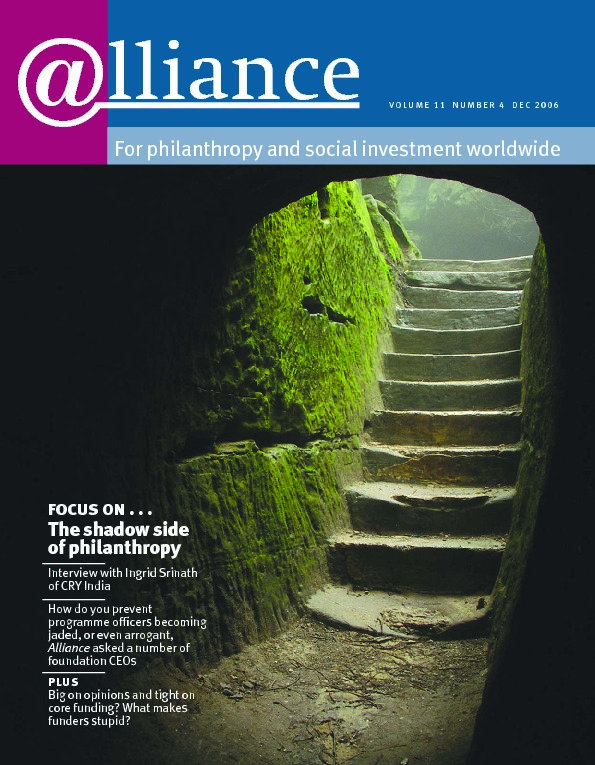I am writing in response to Andrew Milner’s article in the September issue of Alliance. His interviews with three firms of investment advisers reveal a merging of two distinct concepts. Social investment is recognized by the Charity Commission as a form of grantmaking. Despite the use of the term ‘investment’, it is not an investment at all. It is an application by a charity of its funds to meet its charitable purposes.
A socially responsible investment or mission-related investment is different: it seeks a financial return but is aligned with the charity’s own purposes. That said, there are some worrying statements in the article. For example, the comment attributed to Jewsons that ‘Trustees could be considered as irresponsible from the point of view of not properly diversifying their investments if they concentrated excessively on the social aspects of their portfolio’. Cambridge says much the same.
This flies in the face of one of the key tenets of charity law: everything charities do has to be in fulfilment of their objects. They do not have to seek to maximize their investment income (though accepting lower returns may be more of a problem for foundations with a permanent endowment). They can choose to take a lower rate of financial return if the social returns, which are aligned with their objects, justify that decision.
Leaving aside the tensions between ‘social investment’ and ‘socially responsible investment’ and taking the latter as the key phrase, Mercer, at least, seems to regard investing for social return as a high-risk strategy. On the other hand, a study conducted by the Canada-based investment research company Innovest and a large Wall Street investment bank showed that applying a set of environmental screens resulted in a risk-adjusted out-performance premium for a range of standard portfolios. A social ‘index’ consisting of 60 Canadian companies that all passed a set of broadly based social and environmental screens also outperformed the conventional market index by around five percentage points.
It is disappointing, too, to read that the advisers generally feel that they do not have the capacity to help Trustees evaluate non-financial returns. Many charities, I believe, want to see a blended financial and social return. This will demand a more sophisticated form of investment analysis, and key advisers such as those interviewed must surely be among the vital players in helping develop this. Instead it is suggested that this type of cost/benefit analysis is the responsibility of a charity’s Trustees. I am sure many Trustees will feel they are not capable of making such an analysis and will retreat to the safe zone of seeking to maximize yield.
No doubt the advisers will feel comfortable with this – but it ducks the key issue: not can charities engage in socially responsible investment but, rather, should they engage in it?
Stephen Lloyd
Senior Partner & Head of Charity and Social Enterprise, Bates Wells & Braithwaite




Comments (0)